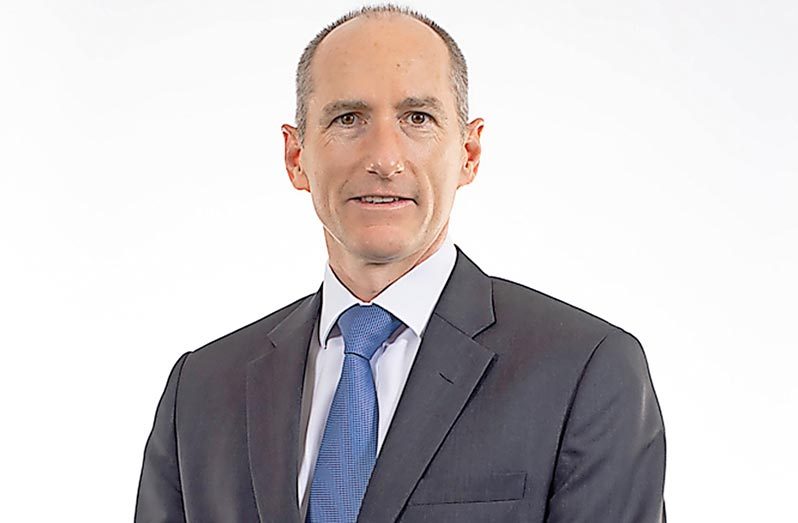By Lisa Hamilton
NEWS that the Environmental Protection Agency (EPA) had planned to take ExxonMobil to court over its refusal to pay environmental fines in relation to “non-toxic” spills offshore Guyana has drawn a conciliatory approach from the oil giant.
President of ExxonMobil Guyana, Alistair Routledge said on Wednesday that the two parties may come to an amicable solution on the matter, even as ExxonMobil does not believe that it has erred.
On August 20, 2020, Stabroek News reported that the oil-and-gas company refused to pay two fines, according to EPA Director, Dr. Vincent Adams. Though the fines are meager compared to the company’s earnings, Dr. Adams said that the Laws of Guyana state that the company must pay up. He said that the company was fined for the months of March through May, but only paid the fine for March.
Public and Government Affairs Adviser, Janelle Persaud had subsequently explained that ExxonMobil was fined jointly with two of its contractors for three hydraulic fluid spills which occurred earlier this year.
She said that the spills of the non-toxic, biodegradable fluids were as little as 2.5 liters in one instance, and were reported to the EPA in a timely manner.

On Wednesday, Routledge updated: “The fine, we believe, is not applicable to us. Now, that said, we also believe that it’s not the best use of the government’s money nor our money to take such a relatively small issue to court, and so, that’s why I asked Dr. Adams that our lawyer get together with his, and that we try to work through those details and come to a solution which is more constructive for both parties.”
He maintained ExxonMobil’s position that the water produced from the reservoirs is treated on the vessel to international standards, and what is discharged causes no damage to the environment.
Even so, there is a discussion ongoing between the company and the EPA about whether the water should be reinjected for the Payara Development Project, pending approval. In this case, ExxonMobil believes that many issues will pose threats.
“There are some potential risks to doing that; some chemistry issues between the produced water and the reservoir fluids into where we would inject, which can cause problems, potentially raising fractures in that part of the reservoir. There are also, potentially, additional environmental aspects of treating and injecting that water, in addition to sea water, in the sense that you can have more air emissions because of the additional energy that’s needed for the treatment of that water,” the ExxonMobil Guyana President explained.
He stated further that, as in all cases, environmental issues are quite complex, and “balancing acts” must be considered by the authorities in charge to manage how they can assure minimal impact to the environment, while maximising the return to the State.



.jpg)










